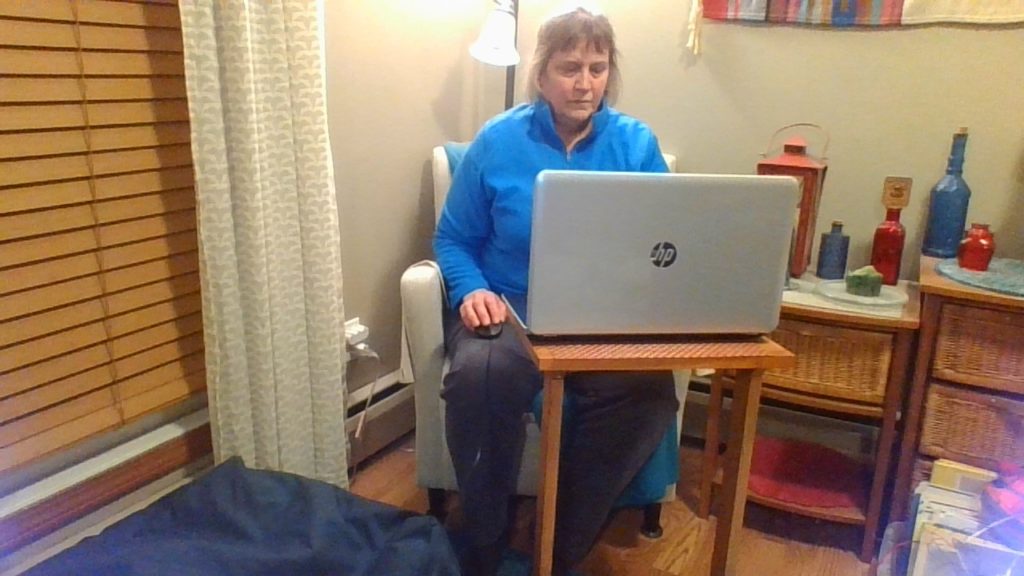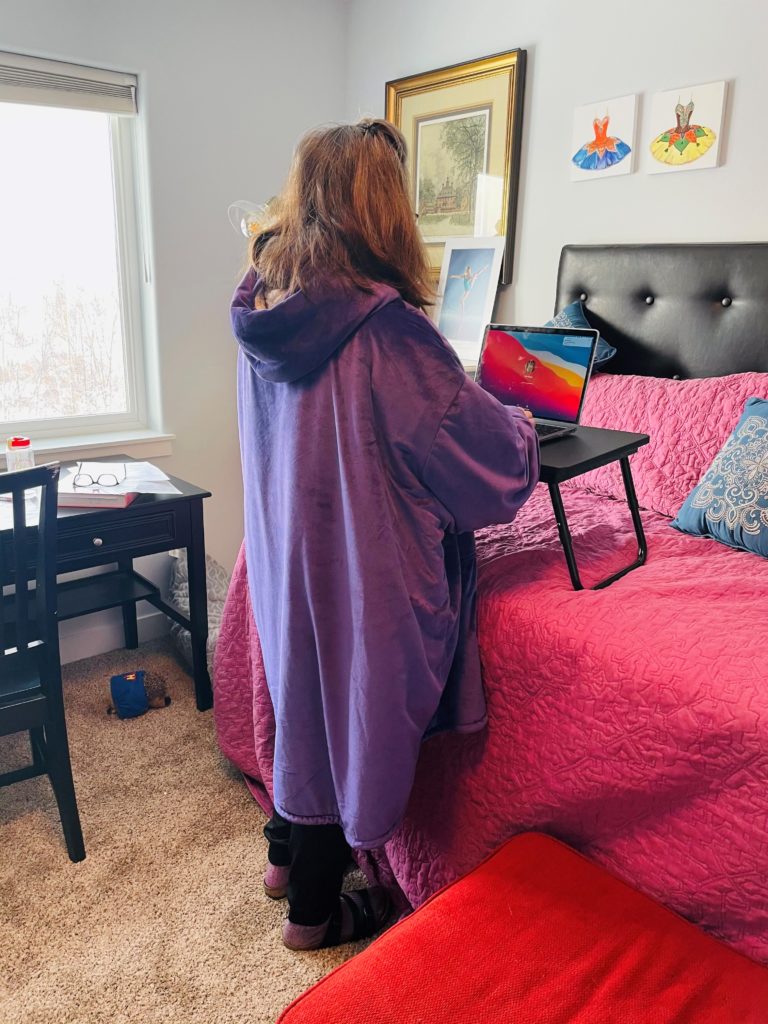Proper Ergonomics For Your Home Office
With the increase of people working from home, we have to wonder how home set-ups are working for our patients. From distractions to using safe and proper postures while at the computer, working from home can be difficult. We set out to ask some of our patients if they would mind showing us pictures of their computer workstation set-ups!
To demonstrate proper work from home ergonomics, we will be sharing corrections to poor posture scenarios, without moving your work set-up home!
Work From Home Ergonomics
From the Couch
The most comfortable place in everyone’s home is probably on the couch. BUT! If you stay in this position day after day, you may find yourself with symptoms such as numbness and tingling in your hands.

With just a few adjustments, these symptoms, along with potential neck and back pain/discomfort can be lessened.

Another idea, is to have a variety of positions you can alternate throughout the day. Such as moving from the floor (pictured above) to a chair (pictured below) or back to the couch with a raised surface for your laptop.

Ischemia is when your blood flow is stopped due to static postures. Having a variety of work surfaces allows movement and blood flow through your tissues which will decrease painful symptoms caused by ischemia.
Tips for a Seated Position:
- Hips and knees are bent at 90 degrees
- No pressure from the chair on the back of the knees
- Shoulders down and relaxed while typing
- Elbows bent and at your side
- Wrists are straight (neutral)
- Mouse is close by, elbow slightly bent
- Monitor about an arm’s length away (at most)
- Monitor height is just below eye level
Standing Work Stations
You can also create a standing work station. Ideas for this are many. You can stack items (one person used extra mattresses!). Just make sure your standing station is safe and secure!

Tips for Standing Work Stations:
- Stand close to surface to avoid bending or hunching forward
- Head in a chin-tuck position (be a turtle, not a chicken!)
- Shoulders down and relaxed
- Elbows resting at your sides
- Wrists straight (neutral)
- Monitor about an arm’s length away
- Monitor height just below eye level

Ideally, having a sitting AND standing work station would be ideal! Then you could vary your positions throughout the day. Of course, this may not be possible.
Tips for a Single Work Station:
- Change position every 50 minutes (stand and stretch or walk to get a glass of water and stretch)
- Look away from the monitor every 20 minutes (look outside, or up!)
- Take a deep breath and reach hands to the ceiling throughout the day
- An adjustable chair is ideal. If you don’t have one, make sure you are sitting in a good supportive chair (Kim in chair at desk)
Other helpful ideas:
- If you are using a laptop, an external keyboard will allow for better posture options
- Use phone books to prop the laptop on when using an external keyboard
Stretches while at the computer:
- Reach arms out in front of you, bend wrists up, then down
- Open and close fingers and thumbs
- Reach arms out to the side of you, bend elbows toward, then away from you
- Put hands behind head and lean back (slow and careful!)
- Bend head to right, ear towards shoulder, then to left
- Look down at right arm pit, then left
- Bend at waist to touch the floor
- Stand up and bend back at waist (gently!), then side to side
How We Can Help!
It is very important to be aware of ergonomics at the office or the working from home environment. At Alaska Hand Rehabilitation, we have the capability to offer an ergonomic evaluation through zoom to evaluate your home or office set up. We can also provide more in depth instruction at the clinic during in-person appointments. After obtaining a referral from your primary health care provider, you can set up an appointment to meet with one of our therapists.
This is especially important if you are experiencing symptoms such as pain, tension, numbness, tingling or tightness in your upper extremities. We can provide treatment and a home exercise program after an evaluation of your status.
If you have any questions in the meantime, please feel free to contact us at (907)563-8318.
Written By: Sheila King, OTR/L, CHT


